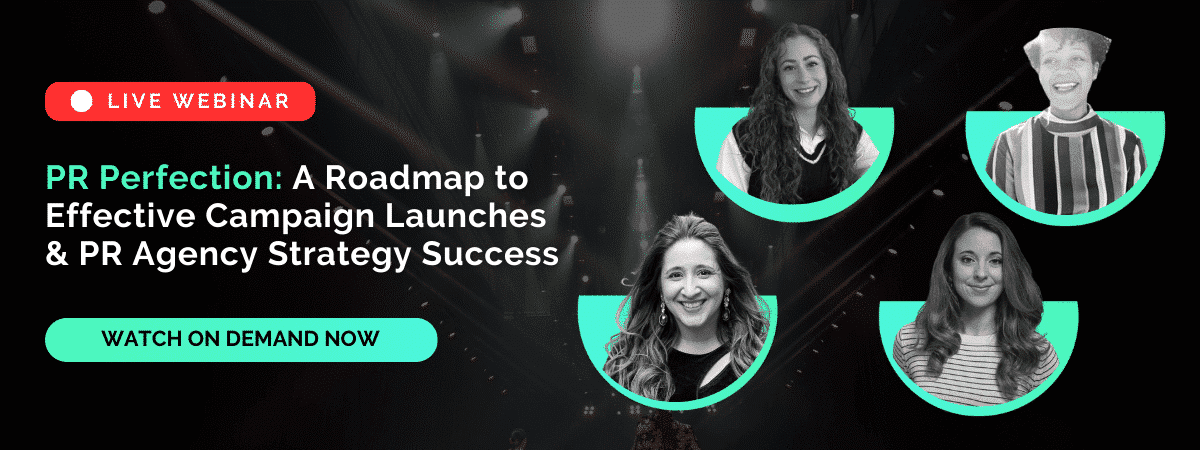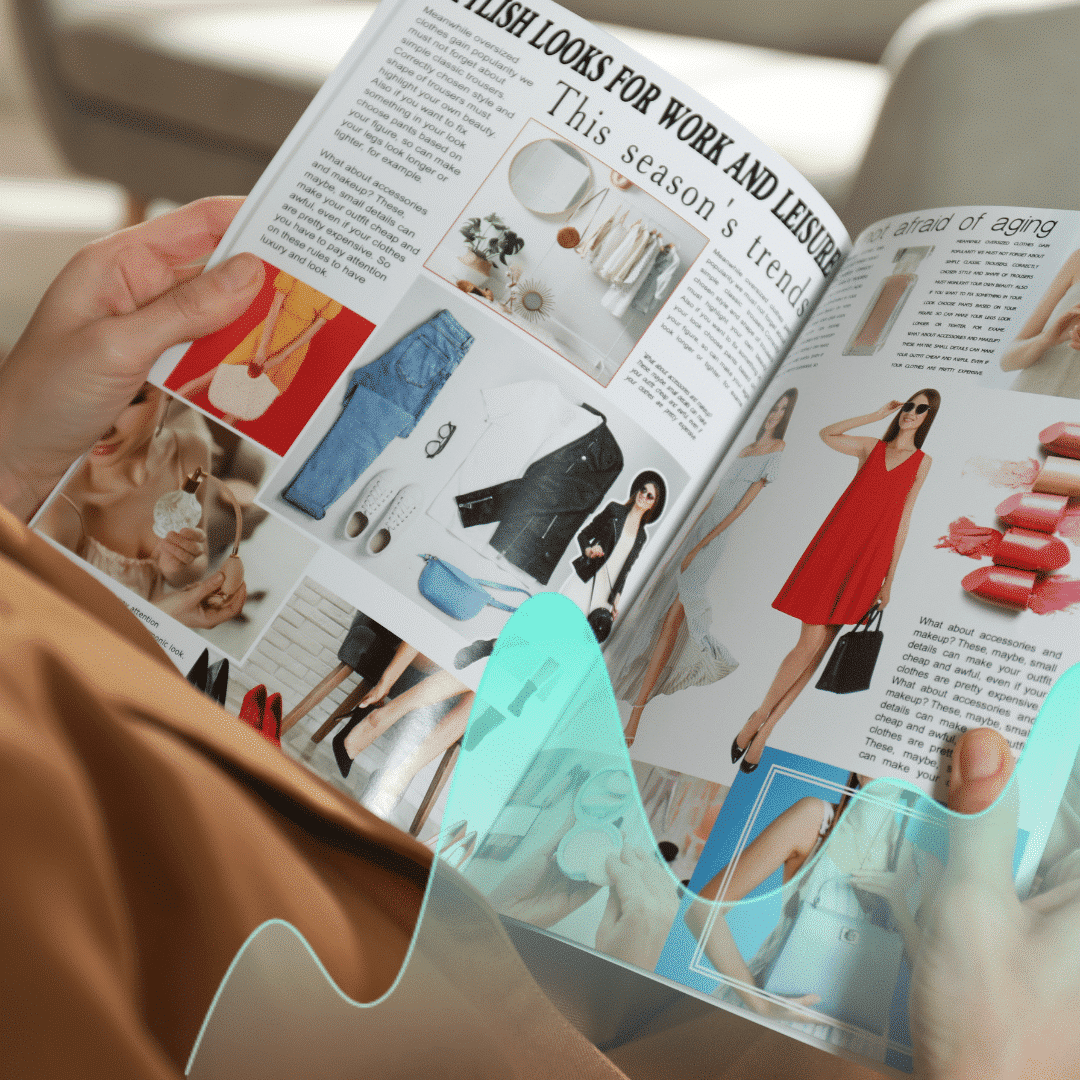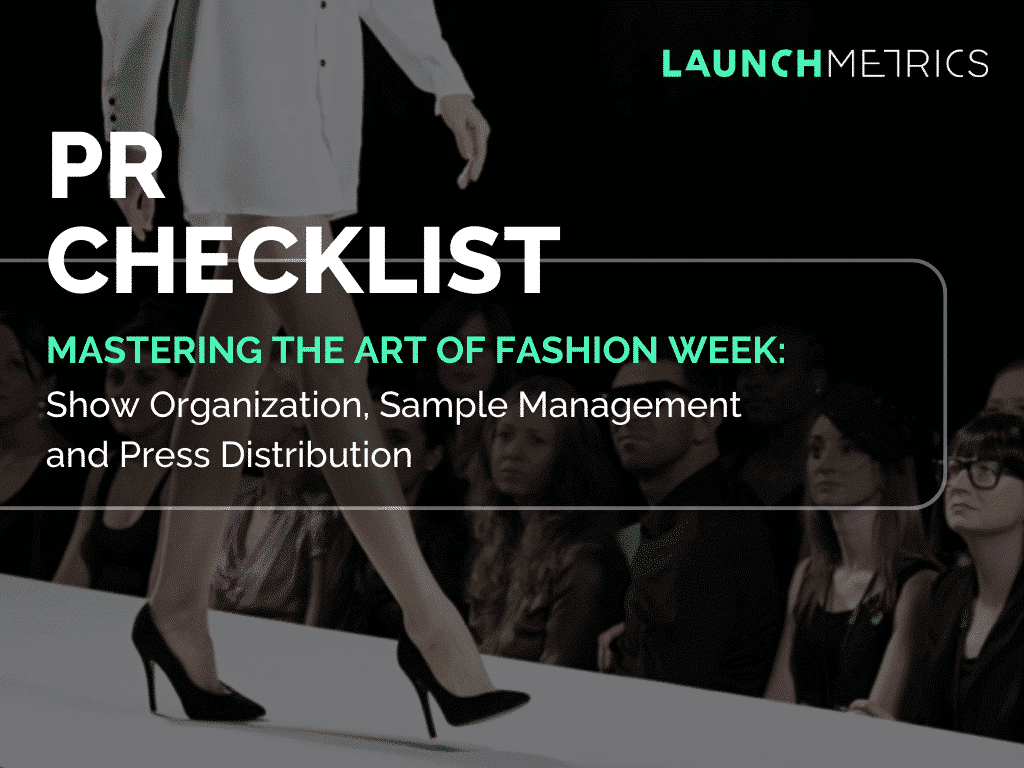Fashion weeks offer brands a global platform to showcase creativity and innovation while providing ample opportunity for PR Impact and Marketing analysis. Their potential for driving massive value doesn’t end when the curtain falls on the last look of the runway - and any subsequent activity must spill into your PR Reporting.
In our latest PR Checklist, Mastering the Art of Fashion Week: Show Organization, Sample Management and Press Distribution, we take you through everything brands need to do, step-by-step, to maximize fashion week ROI – from planning an event through to amplifying its coverage.
One of the steps to amplification is using PR reporting to measure impact, optimize campaigns, and inform strategic direction.
That’s what we’ll discuss in this post, which dives into the challenges of quantifying impact and how using standardized metrics can help to solve them.
Don’t forget to download the full checklist for more about managing every aspect of your next event.
In this article you’ll learn…
PR Report: The Challenge of Measuring Fashion Week Impact
Coverage opportunities are growing as each new season is ushered in. And, outside of the big four Fashion Weeks, events held in other cities are climbing the press feature ranks, seen to be increasingly popular with new Voices and the press.
This is why, no matter your location or targeted event, being able to accurately track and measure impact of is a crucial aspect of fashion PR and marketing, And yet, it’s one of the biggest obstacles brands face in accelerating growth and gaining a competitive edge.
In Launchmetrics research from S2 2023, half of brands working with PR agencies listed measuring impact and demonstrating ROI as their number one communication challenge.
Considering fashion week activities specifically, the cost of participation for brands is high – but so is the potential for generating buzz, amplifying social reach, and, ultimately, driving sales.
Achieving that potential comes down to how well you're able to quantify efforts to optimize post-show PR amplification, Fashion PR Measurement, and continually improve upon marketing strategy, season to season.
The problem for many Fashion PR agencies and brands is that they do not have access to the data and metrics that allow them to do this adequately. As a consequence, they miss out on high-value opportunities and can even end up pouring their resources into the wrong channels and partnerships. Fashion PR Reports can soon become a mess.
If you're in this position, it’s time to make some changes.
Brand & PR Measurement: The Importance of Fashion Week Data
Data is everything when it comes to measuring the impact of your fashion week activities and delivering a professional marketing or PR Report.
It’s what allows you to understand how far the ripples of your marketing effects are spreading, how well you’re connecting with your target audience, who your biggest brand advocates are, and much more.
Measuring digital performance is of course crucial in the online era, but ideally you want to be able to track and quantify offline coverage as well. Print media titles still hold a lot of clout, and can generate lasting impact for post-show.
Using online and offline data combined gives you a more complete picture of your impact and how much value is being generated at each event.
On top of this, the more complete your data, the better you can segment it to quantify your coverage by channel, platform, region, and more. Fashion PR Measurement just got that much easier.
PR KPIs & the Power of Standardized Metrics
So, tracking all brand mentions with multi-dimensional data is the first step. But the real secret is in how you use that data.
For example, you might set Fashion PR KPIs around achieving a certain reach or social engagement. However, while such goal-driven activities are valuable for setting your marketing direction, you won’t be able to fully understand the value of those activities without the right metrics.
Let’s imagine that a brand engages multiple Influencers to attend your fashion week show.
To truly understand the impact of each one, and therefore measure your return on investment, you would need to track a number of things, including:
- Social engagements on their posts across all platforms
- Engagements with your Owned Media posts in which they feature
- Mentions they generate in online and offline media
The problem is that not all features and mentions are of equal value. An Instagram post might generate more value than a TikTok post by the same Influencer. A street style image in a carousel gallery may generate more value than a front row image in a magazine. The real value of each media mention depends on many factors.
This is why a standardized metric is such a game-changer when it comes to measuring impact. It allows you to measure every single result of your PR activities with a like-for-like value.

Using MIV® for Fashion Week PR Measurement
Media Impact Value® or MIV® is one of the most well-known, widely-used, and powerful standardized measurements in the industry. This proprietary Machine Learning algorithm was created by Launchmetrics to meet the need for a better way to measure and benchmark the impact of media placements and mentions.
So, what is MIV®? Put simply, it’s a monetary value assigned to every post or mention a brand receives across social, online, and print. With this metric to go by, you’re no longer comparing apples with oranges: you can easily compare performance between different Voices, platforms, content types, regions, channels, and more.
This quickly and clearly highlights which activities and partnerships are generating the highest ROI, so you can optimize spending and hone your strategic direction. All of this will feed into increased (and more successful ) coverage and more impressive Fashion PR Reports.
Importantly, MIV® is based on both quantitative and qualitative parameters. That means the source authority and quality of content are taken into account alongside factors like engagement and reach.
MIV® is also a powerful tool for benchmarking. PR teams can use it track a brand’s performance against specific competitors or the industry as a whole, as well as to track industry trends.
This breakdown of MIV® generated during Paris Fashion Week SS24 shows the shift in dominant Voices year-on-year, and highlights how certain amplifiers can increase fashion coverage opportunities.
Maximizing Fashion Week Value is All About The Right PR Tools
Quantifying – and therefore maximizing – the value of fashion week activities is a challenge for many brands. But as we’ve seen above, it can be drastically simplified with the use of the right tools.
Having the right data at your fingertips, and a standardized metric that transforms that data into something tangible and comparable, will change the game for your fashion week coverage efforts and any PR Report and PR Measurement activities.
If you'd like to find out how to seamlessly collate Fashion coverage, easily quantify performance and drive better results, check out Discover. It's the industry leading tool that tracks mentions across online, print and social media channels globally, offers comprehensive reporting and benchmarking, and delivers results in beautiful, modern and bespoke coverage books.
Allow your future PR reports and marketing efforts to truly shine.


